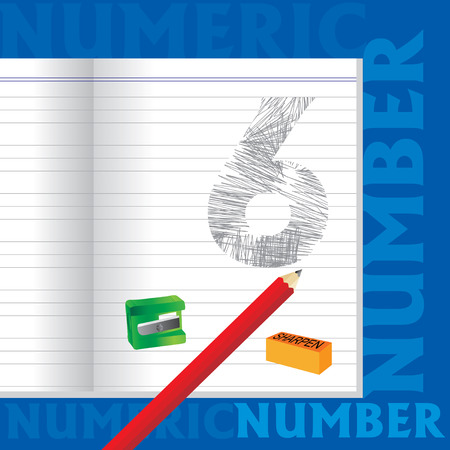Origins of Palmistry in the British Isles
The story of palmistry, or chiromancy, in the United Kingdom is a fascinating tapestry woven from ancient beliefs, cultural exchanges, and the rich oral traditions that have shaped the British Isles for centuries. Early references to palmistry in Britain can be traced back to the medieval period, although the roots of this practice likely stretch even further into the shadows of prehistory. It is widely believed that palmistry made its way to the UK through a combination of trade routes, migration patterns, and most notably, the influence of Romani and other travelling communities who brought with them esoteric knowledge and practices from across continental Europe and beyond.
While some historical sources hint at local forms of hand reading among Celtic and Anglo-Saxon populations, it was during the late Middle Ages and Renaissance that palmistry began to surface more explicitly in British texts and folklore. Travelling Romani groups played a pivotal role in this development; their reputation as skilled fortune tellers helped cement palmistry’s association with mystery and otherworldly insight. As these communities moved through England, Scotland, and Wales, they contributed to a growing fascination with divination and character analysis by reading the lines and mounts of the hand—a practice which soon found eager audiences among both rural villagers and urban dwellers alike.
Trade networks connecting Britain to France, Italy, India, and North Africa also facilitated the exchange of mystical concepts, further enriching local understandings of palmistry. Over time, these diverse influences melded with homegrown superstitions and folk wisdom to create a uniquely British approach to hand reading—one that blended imported techniques with native sensibilities. By the time palmistry appeared in Elizabethan literature and courtly circles, it had already become an enduring part of the UK’s spiritual landscape, laying the groundwork for centuries of evolving tradition.
2. Palmistry in the Medieval and Early Modern Periods
The fortunes of palmistry in Britain during the Middle Ages and Renaissance tell a tale as intricate as the lines on a human hand. In this era, palmistry was often woven into the tapestry of local folklore, serving both as a tool for personal insight and as a marker of ‘otherness’. Its ambiguous status—hovering between folk wisdom and suspicion—reflected broader societal anxieties about magic, knowledge, and authority.
The Cultural Landscape: Folklore and Superstition
Palmistry found fertile ground amidst a British culture steeped in superstition and oral traditions. Village wise-women and cunning folk sometimes read palms alongside herbs or charms, offering hope or warning to those seeking guidance. Yet, this close association with folk practices also made practitioners vulnerable to accusations of witchcraft, especially during periods of moral panic.
Palmistry & Witchcraft: Perception Table
| Aspect | Medieval View | Early Modern Shift |
|---|---|---|
| Association with Magic | Skepticism; linked to sorcery | Increasingly scrutinised by Church & state |
| Role in Communities | Part of everyday rural life | Marginalised; risk of persecution rises |
| Legal Status | Largely unregulated but frowned upon | Laws against witchcraft impact practice |
The Renaissance: Knowledge Meets Print Culture
The Renaissance period marked a pivotal shift. With the advent of the printing press, palmistry moved from whispered lore to printed manuals. Translations of classical texts—often blending Greek, Arabic, and Roman influences—reached a wider audience. These books lent an air of scholarly legitimacy, even as they drew censure from religious authorities who regarded such arts with suspicion.
Notable Developments:
- The publication of palmistry guides in English allowed broader social classes to access these teachings.
- Palmistry began to be discussed alongside astrology and physiognomy in academic circles, albeit often critically.
This period encapsulates the duality at the heart of British palmistry: both cherished for its insights and challenged for its perceived dangers. The stage was set for further evolution as Enlightenment rationalism beckoned.

3. Victorian Fascination and Scientific Skepticism
The 19th century in Britain, often characterised by its Victorian values and relentless curiosity, witnessed a remarkable surge of interest in palmistry. This era, marked by rapid industrialisation and the blossoming of scientific thought, created a fertile ground for both the proliferation and scrutiny of esoteric practices. Palmistry, once relegated to the fringes of society, began to captivate the imagination of the British public in unprecedented ways.
The Birth of Societies and Publications
During this period, palmistry transformed from an informal parlour amusement into an organised pursuit. Learned societies dedicated to the study and promotion of chiromancy emerged in London and other major cities. These groups, such as the Chirological Society of Great Britain, sought to legitimise palmistry through regular meetings, lectures, and demonstrations. Concurrently, a wave of publications flooded the market—manuals, treatises, and illustrated guides aimed at both sceptics and believers alike. The printed word gave palmistry an air of credibility and accessibility that resonated with Victorian sensibilities.
Palmistry’s Intersection with Spiritualism
The Victorian fascination with palmistry was not isolated; it intersected powerfully with the rise of spiritualism. Séances, mediums, and psychic investigations were commonplace among society’s elite, who were eager to explore realms beyond material understanding. Palmistry became yet another tool for navigating questions about fate, character, and destiny. In drawing room gatherings across England, practitioners read palms not just for entertainment but as a means of accessing deeper truths—a trend reflective of broader spiritualist currents at play.
Scientific Scrutiny and Early Psychology
Yet this fascination did not go unchallenged. The same age that birthed modern science also bred a culture of scepticism. Early psychologists and physiologists viewed palmistry with suspicion or outright dismissal, branding it as pseudoscience. Nevertheless, some forward-thinking intellectuals attempted to bridge the gap: they explored connections between personality traits and physical characteristics—foreshadowing later developments in psychology. Thus, palmistry in Victorian Britain became a site of lively debate between tradition and innovation, belief and empirical evidence.
In sum, the 19th century was a crucible for palmistry in the UK—a time when it was shaped by intellectual curiosity, spiritual yearning, and an emerging scientific ethos that would define its place in modern British culture.
4. Regional Traditions and Local Practices
Across the United Kingdom, palmistry has never been a monolithic practice. Instead, it has evolved with distinctive regional flavours, each shaped by local beliefs, superstitions, and storytelling traditions. While England, Scotland, Wales, and Northern Ireland share overarching threads of British folklore, their approach to reading palms reveals subtle yet fascinating differences.
Distinctive Customs Across the Regions
Let’s take a closer look at how palmistry is uniquely practised in each nation:
| Region | Unique Customs | Connections to Local Superstition & Storytelling |
|---|---|---|
| England | Focus on the “life line” for health and fortune; often practised by Romani communities in fairs and markets. | Linked to tales of fate and destiny; readings often woven into local legends of luck or misfortune. |
| Scotland | Palmistry entwined with second sight (“An Dà Shealladh”); some readers use both hands to interpret ancestral ties. | Tales of seers and prophetic visions abound; palm readings seen as extensions of ancient Highland clairvoyance. |
| Wales | Emphasis on “heart line” and emotional wellbeing; palmists might blend in Druidic symbolism or references to Arthurian myth. | Palmistry stories often retold in bardic tradition, connecting personal fate to wider mythic cycles. |
| Northern Ireland | Practice sometimes combined with tea leaf reading; special attention paid to marks believed to represent family curses or blessings. | Heavily influenced by local folklore about banshees and omens; hand markings thought to carry generational meaning. |
The Role of Storytelling in Local Palmistry
Storytelling lies at the heart of British folk traditions, and nowhere is this more evident than in regional palmistry. Whether at an English summer fête, a Scottish ceilidh, a Welsh eisteddfod, or a Northern Irish gathering, the reading of palms is as much about narrative as it is about lines and mounts. Readers don’t just interpret physical signs—they craft stories that resonate with local identities and communal memories. This narrative approach ensures that every palmistry session feels deeply personal yet unmistakably rooted in its cultural context.
Blending Old Beliefs with Modern Curiosity
Today’s practitioners continue to draw upon these regional customs while adapting them for modern audiences. While many may have traded candle-lit caravans for Instagram accounts or pop-up shops in trendy boroughs, the undercurrent remains: palmistry in the UK is as much about keeping alive local myths and histories as it is about fortune-telling itself.
A Living Tradition Across the Isles
The ongoing evolution of palmistry across England, Scotland, Wales, and Northern Ireland highlights not only diversity but also unity—a shared fascination with fate told through hands, shaped by centuries of belief, story, and local colour.
5. 20th-Century Decline and Modern Revival
The mid-20th century marked a pronounced decline in the practice and public perception of palmistry throughout the United Kingdom. Following the seismic shifts of World War II, British society gravitated towards rationalism and scientific thinking, relegating practices such as palmistry to the fringes. The rise of the NHS and advancements in psychology further diminished interest in traditional forms of divination, positioning them as relics of a bygone era. Yet, popular culture had its own influences on palmistry’s narrative. From the mystical undertones of 1960s counterculture to fleeting appearances in post-war cinema and literature, palmistry survived as a quirky curiosity rather than a mainstream practice.
However, as Britain entered the late 20th and early 21st centuries, a subtle but significant revival began to take shape. This resurgence was shaped by two major forces: the wellness movement and digital innovation. Wellness circles, particularly those centred around holistic health and mindfulness, rediscovered palmistry as a tool for self-reflection rather than fortune-telling. Here, reading one’s lines became less about predicting destiny and more about understanding personal traits—a shift that resonated with contemporary British values around individuality and mental wellbeing.
In parallel, digital platforms fuelled palmistry’s newfound popularity. Social media influencers and wellness bloggers across the UK began to share insights on palm reading, often blending it with psychology, astrology, and even pop culture references. Mobile apps emerged offering instant readings, while virtual workshops attracted younger generations eager for alternative ways to explore identity. This blend of tradition and modernity reflects a uniquely British approach: respectful of heritage yet open to reinvention. In this way, palmistry has journeyed from Victorian parlours to Instagram feeds—reimagined for a new era, yet still echoing its historical roots.
6. Palmistry Today: Between Heritage and Contemporary Practice
In the present-day United Kingdom, palmistry finds itself delicately poised between its rich historical heritage and a growing wave of contemporary interest. While some may still associate palm reading with Romani fairs or Edwardian parlours, today’s Britain sees the practice woven into a much broader tapestry of cultural life.
The Revival at Heritage Fairs and Festivals
Across the country, from Somerset’s village fêtes to grand stately home open days, palmistry is frequently spotlighted as part of living history demonstrations. These events provide an engaging glimpse into Victorian and Edwardian social rituals, with skilled readers donning period garb and offering insights that echo the superstitions—and amusements—of bygone eras. Such displays not only keep tradition alive but also foster a sense of nostalgia and communal curiosity about British esoteric customs.
Palmistry as Boutique Experience
Simultaneously, palmistry has undergone something of a rebrand in urban Britain. In chic London boroughs and creative hubs like Brighton, boutique palm readers attract a clientele seeking more than mere fortune-telling. Here, the focus often shifts towards personal development—self-reflection, mindfulness, and holistic well-being. Palm readings are curated as bespoke experiences, paired with herbal teas or creative workshops, reflecting an appetite for meaningful connection in an era marked by digital overload.
Cultural Tourism and Media Representation
Palmistry’s enduring mystique also plays a role in the UK’s vibrant cultural tourism industry. Guided tours of historic cities such as Bath or York may include stops at sites once associated with famous seers or stories of local fortune-tellers. Meanwhile, British media periodically revisits the subject—from serious documentaries exploring the psychology behind divination to light-hearted segments on popular morning shows—demonstrating both scepticism and affection for this arcane art.
Navigating Scepticism and Curiosity
The contemporary British attitude towards palmistry is nuanced—a blend of critical rationalism (a hallmark of modern British identity) and playful openness to the unknown. While many regard it as charming entertainment or cultural heritage rather than science, there’s no denying palmistry’s enduring appeal as a mirror for self-exploration. In a society that prizes both tradition and innovation, palmistry continues to captivate those searching for meaning in the lines of their hands—whether at a bustling summer fair or in the quiet corner of a city café.

